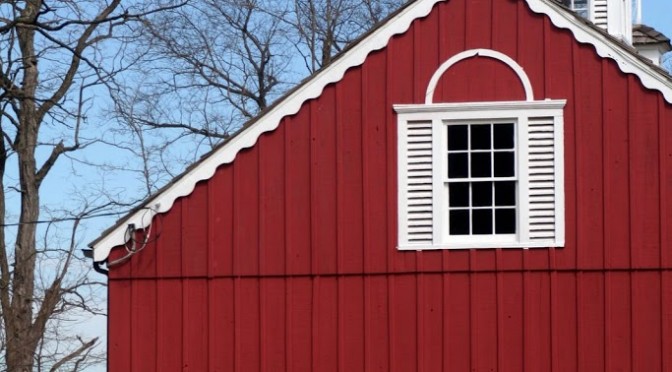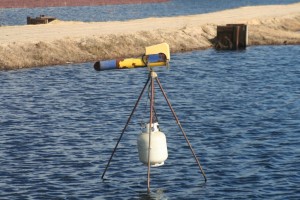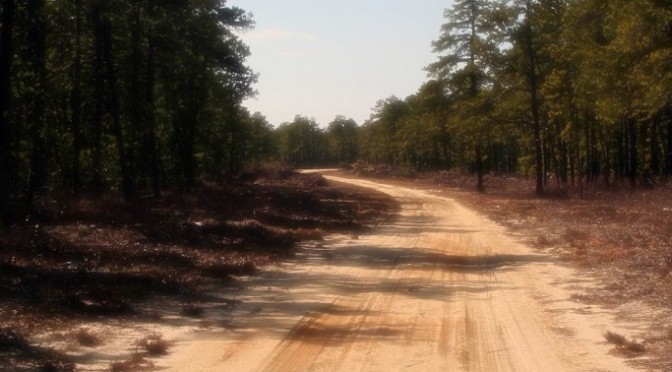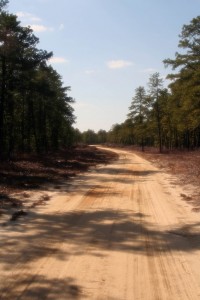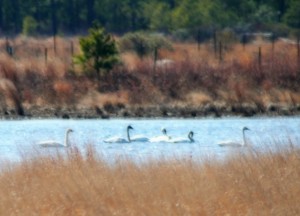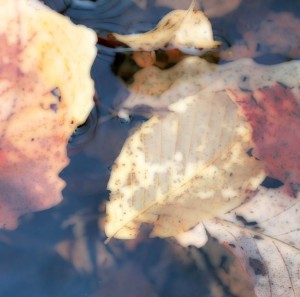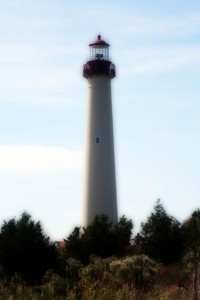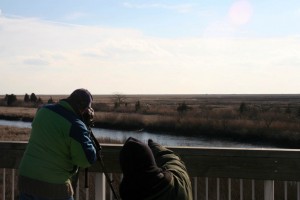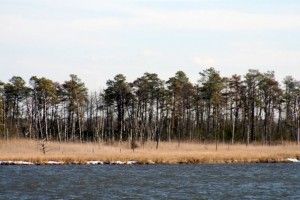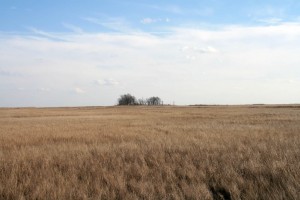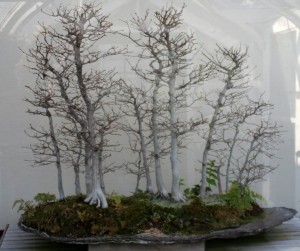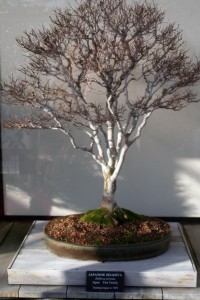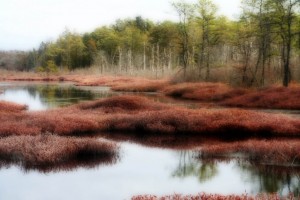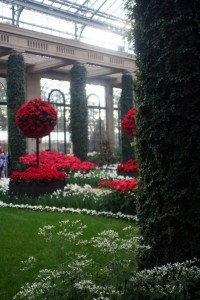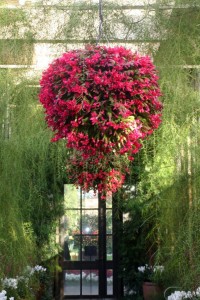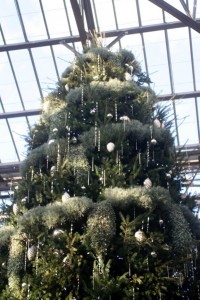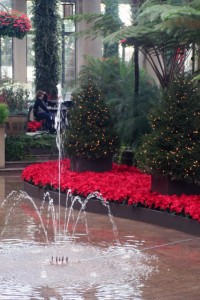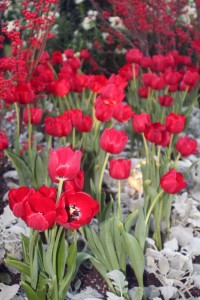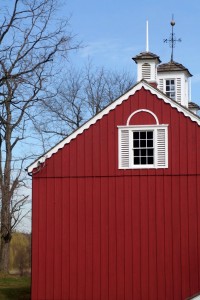 I spent a few hours wandering around some nearby farmland that was purchased in the last few years to become part of the county park system. I’ve only been there once before and today it was just as deserted as on my prior visit. There’s no soccer fields or playground here, so it tends to be very quiet but for a few runners or dog walkers.
I spent a few hours wandering around some nearby farmland that was purchased in the last few years to become part of the county park system. I’ve only been there once before and today it was just as deserted as on my prior visit. There’s no soccer fields or playground here, so it tends to be very quiet but for a few runners or dog walkers.
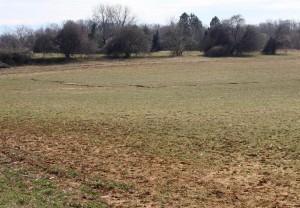 There is a small wooded hillside on the property that was bursting with trilling juncos today. The remainder of the area is farm fields, some of which are leased out to grow corn mostly. It’s a good spot to visit in summer for butterflies. Today when I stepped out from the woods to the edge of the field above I immediately heard insects humming and saw thousands of these flying about low over the field.
There is a small wooded hillside on the property that was bursting with trilling juncos today. The remainder of the area is farm fields, some of which are leased out to grow corn mostly. It’s a good spot to visit in summer for butterflies. Today when I stepped out from the woods to the edge of the field above I immediately heard insects humming and saw thousands of these flying about low over the field.
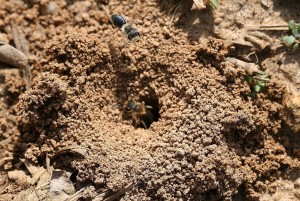 I have no idea what they are, but they look like some sort of bee. The fields edges were covered with holes that looked like anthills, and when I got close enough for photos I saw the bees going in and out of the holes.
I have no idea what they are, but they look like some sort of bee. The fields edges were covered with holes that looked like anthills, and when I got close enough for photos I saw the bees going in and out of the holes.
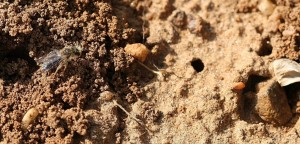 They weren’t at all concerned with me. Thank goodness because there were lots of them. Anyone have any ideas? I haven’t looked in any of my insect guides yet, but doubt I’ll have much luck sorting these out.
They weren’t at all concerned with me. Thank goodness because there were lots of them. Anyone have any ideas? I haven’t looked in any of my insect guides yet, but doubt I’ll have much luck sorting these out.
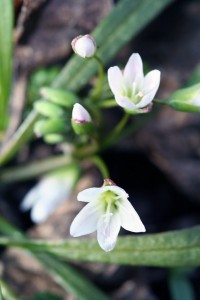 At the edge of the property is a small brook that one can walk along for a few miles. Most of the land that this brook runs through is protected as a *greenway* and it connects a few different county parks that I visit. I thought I might be able to find some wildflowers blooming so I walked in the wet woods along the brook for a ways and found these blooming – I think they’re spring beauties?
At the edge of the property is a small brook that one can walk along for a few miles. Most of the land that this brook runs through is protected as a *greenway* and it connects a few different county parks that I visit. I thought I might be able to find some wildflowers blooming so I walked in the wet woods along the brook for a ways and found these blooming – I think they’re spring beauties?
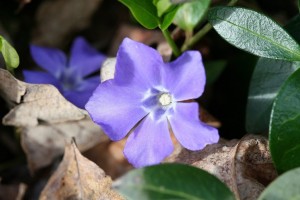 I found great patches of periwinkle in the shady woods. At least, that’s what I think it is. It reminds me of the vinca that people plant beneath large trees in their yards, so these pretty purple flowers must be escapees invading the woodlands.
I found great patches of periwinkle in the shady woods. At least, that’s what I think it is. It reminds me of the vinca that people plant beneath large trees in their yards, so these pretty purple flowers must be escapees invading the woodlands.
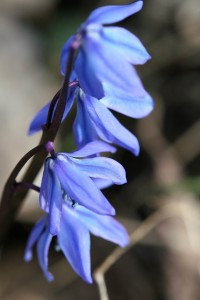 I also found many patches of these beautiful purple flowers, but haven’t been able to sort out what they are. I took lots of *artsy* photos, but none to help with ID. Maybe someone will recognize it anyway.
I also found many patches of these beautiful purple flowers, but haven’t been able to sort out what they are. I took lots of *artsy* photos, but none to help with ID. Maybe someone will recognize it anyway.I could have walked for hours today, but worried about running out of light on the walk back to my car. I didn’t see another person until the very end of my walk, when I came across a group of very muddy kids with their mom, sifting for shark’s teeth and other fossils in the brook. Looked like fun, but a bit too chilly for me! It was just nice to see kids out doing such a thing, and it reminded me of something we might have dreamed up to do as kids on an early spring day.
